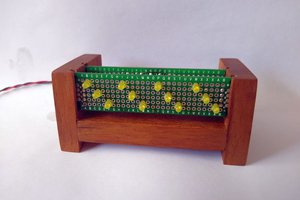Welcome to my timepiece project using an MSP430G2553 chip.
This project, for now, will hold two core tenets.
- Display local time via BCD in LED's.
- Time is calculated and stored all on-chip, using timer peripheral interrupts.
I will be using the logs as a sort of tutorial on the thought process behind how the system works.
 W. Alex Best
W. Alex Best

 danjovic
danjovic
 Marten Electric
Marten Electric
 Craig Hissett
Craig Hissett